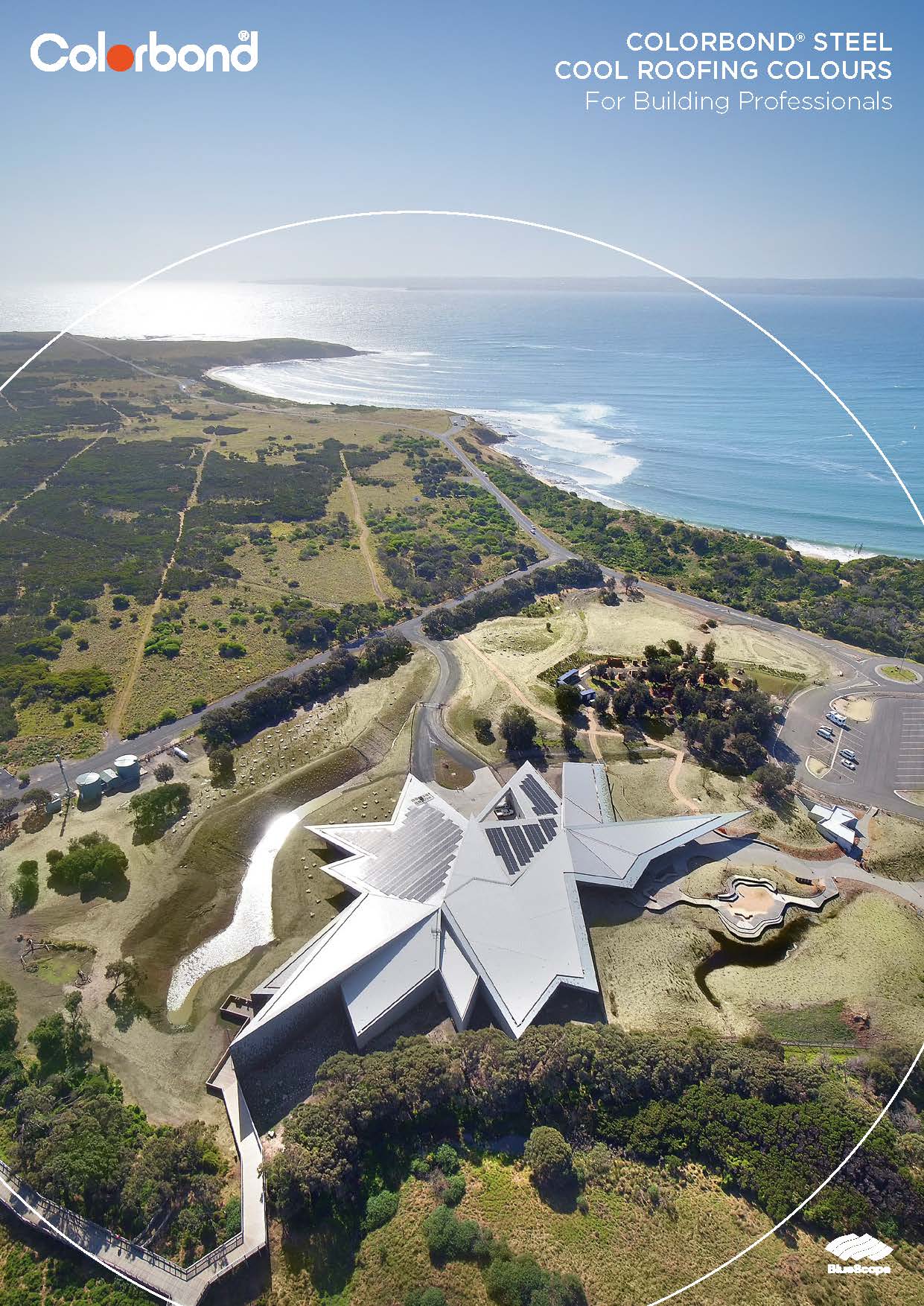
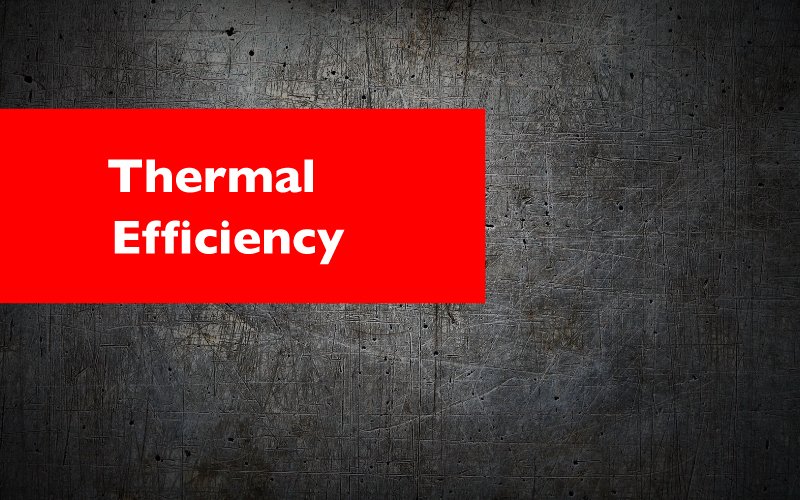
MORE EFFICIENT ROOFING FOR THE FUTURE
No doubt you would have heard about Urban Heat Islands – the term is used to describe the greater retention of heat in urban areas compared to rural areas. Building materials like dark coloured roofing, along with concrete and bitumen absorb solar energy and increase temperatures within the environment.
This is most likely to occur in areas with new residential developments that may not have established trees to help provide a cooling buffer. The people who live in these homes usually end up using more energy trying to stay cool, which only makes the problem worse.
Urban heat islands are a real problem caused by development and population growth that governments and town planners globally are trying to address. Cities around USA are converting roofs to lighter colours. The NSW government announcement in August 2021 that it would ban dark roofs in all new developments. In Victoria, this has not been mandated but roofers can still play a big part by giving their customers information to help them make sustainable choices.
A metal roof is a good choice, because steel does not hold heat for as long as roof tiles. On a summer night, a house with a metal roof will have cooler internal temperatures.
THE DARK ROOF EFFECT
Roofing is estimated to account for up to 25% of urban surfaces.* The roof of a building has the most exposure to solar rays, so it makes sense to try and improve the reflectivity of these surfaces. Researchers have documented the effects by comparing a flat black roof and a flat white roof and found that on a 37° day in summer:
- the black roof will be 80° compared with 44° on the white roof
- 38% of the heat will be absorbed into the atmosphere from the black roof versus 10% from the white roof
- 52% of the heat will escape into the city air from the black roof versus 8% from the white roof
- 5% of the solar rays will be reflected from the black roof versus 80% from the white roof
- The building with the black roof will experience temperature increase of 4.5% compared with 1.5% from the white roof
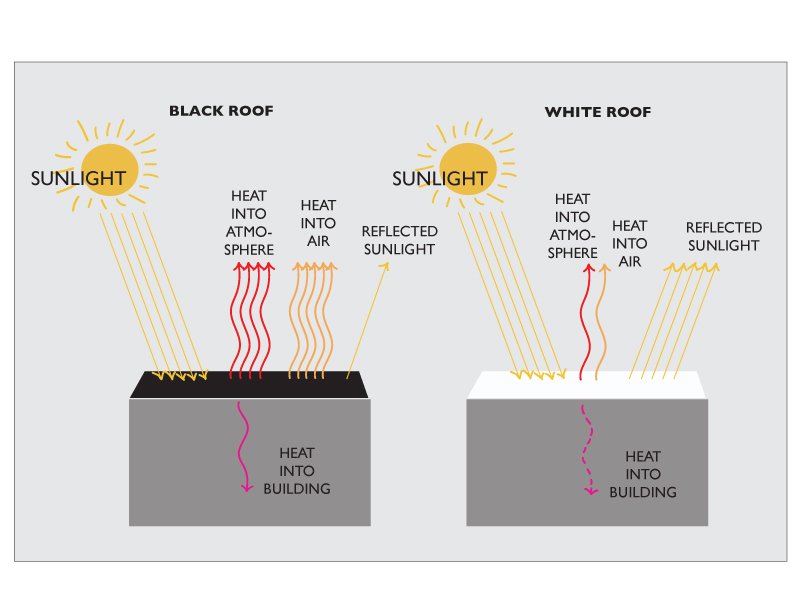
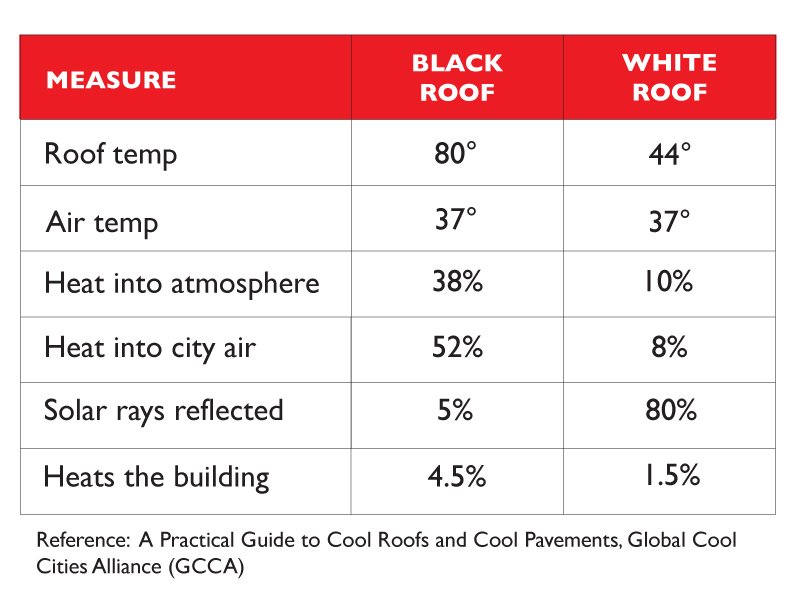
THE BENEFIT OF A METAL ROOF
A metal roof is a good choice, because steel does not hold heat for as long as roof tiles. On a summer night, a house with a metal roof will have cooler internal temperatures.
SOLAR ABSORPTANCE OF COLORBOND® STEEL
Bluescope Steel have developed a thermal reflective coating – known as Thermatech® technology, that is standard in the classic and contemporary range of COLORBOND® colours with the exception of Night Sky®. This chart below shows the solar absorptance of each colour as a percentage, demonstrating that the light colours are much more effective at reflecting the sun rays – with Surf Mist® being the best performing colour (32%) and Night Sky® being the least effective (96%).

REFLECTIVITY OR GLARE?
A lighter coloured roof will be more reflective, but the flip side of that is that reflecting sunlight may cause glare. It is important to weigh up the benefits of using a reflective material against any negative impacts that glare might cause.
To determine if glare might cause an issue, consider the position of the sun, and the aspect from which the roof will be viewed. The table opposite can help you work out how severe the impact of glare might be.
Note that anything positioned south of the building is most likely to experience glare when you use highly reflective material. The position of the sun varies across the seasons, and therefore glare might only be an issue for a small proportion of the year. You need to take this into account as well.
Colorbond® products have low reflectance value so broadly speaking, if you are using this product, glare should be minimal.
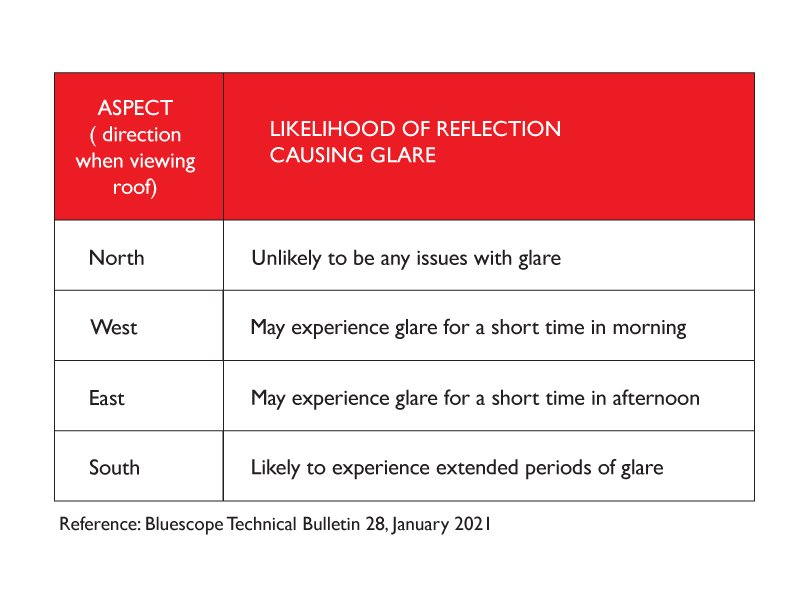
INSULATION
A roof will not achieve maximum efficiency without insulation. It is the area of the house that loses the most heat in winter and gains the most heat in summer. The R value (which measures the insulation’s ability to resist heat) will guide you on how efficient the insulation – the higher the number the higher the efficiency.
The type of insulation suitable for a roof will depend on various considerations including climate and type of roof. A roofer or building professional will take all these into account before specifying the appropriate type of insulation.
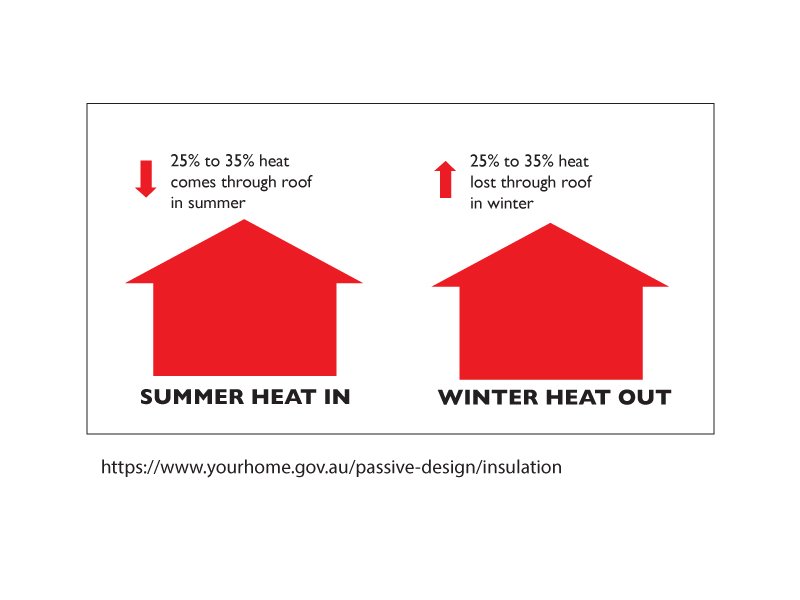
LIGHTER ROOFING, LIGHTER FOOTPRINT
Having the right choice of roofing and insulation can save a household almost 50% of their energy costs. The logical consequence of this is that less energy has been used as result, contributing to less CO2 in the air, and a reduction of the urban heat island effect. This benefits homeowners as well as the wider community.
As global momentum on environmental issues increases, and more governments around the world look for solutions to tackle rising temperatures, we expect to see a big shift in roofing trends in the coming years.

